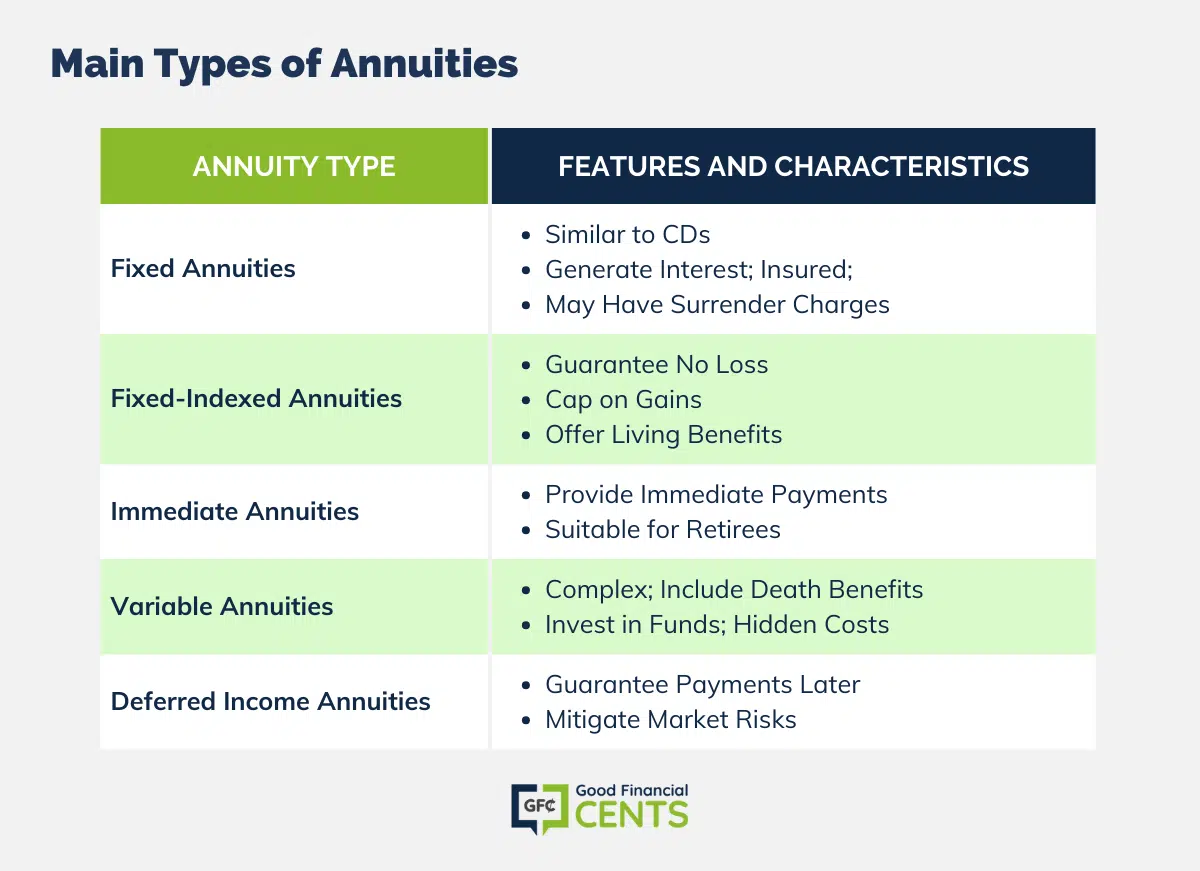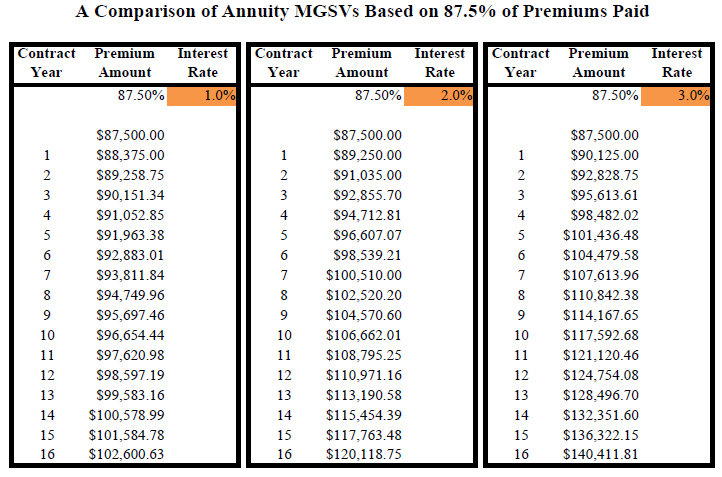All Categories
Featured
Table of Contents
The payment could be invested for growth for a long period of timea solitary premium deferred annuityor spent momentarily, after which payout beginsa solitary premium prompt annuity. Solitary costs annuities are often moneyed by rollovers or from the sale of a valued property. An adaptable costs annuity is an annuity that is planned to be funded by a series of repayments.
Owners of dealt with annuities recognize at the time of their acquisition what the value of the future capital will be that are generated by the annuity. Clearly, the number of cash money flows can not be known in advance (as this depends upon the agreement owner's life-span), yet the assured, taken care of rate of interest at least gives the owner some level of certainty of future income from the annuity.
While this difference appears simple and uncomplicated, it can significantly affect the value that an agreement proprietor inevitably obtains from his/her annuity, and it develops significant unpredictability for the agreement owner - Fixed annuity pros and cons. It likewise commonly has a material effect on the degree of charges that a contract owner pays to the providing insurance provider
Fixed annuities are typically made use of by older investors who have actually restricted possessions yet that desire to offset the threat of outlasting their possessions. Fixed annuities can function as a reliable tool for this function, though not without particular disadvantages. As an example, when it comes to immediate annuities, when a contract has actually been acquired, the contract proprietor relinquishes any type of and all control over the annuity properties.
Exploring Fixed Vs Variable Annuities Everything You Need to Know About Financial Strategies Defining Pros And Cons Of Fixed Annuity And Variable Annuity Pros and Cons of Fixed Income Annuity Vs Variable Growth Annuity Why Choosing the Right Financial Strategy Matters for Retirement Planning How to Compare Different Investment Plans: A Complete Overview Key Differences Between Different Financial Strategies Understanding the Key Features of Long-Term Investments Who Should Consider Choosing Between Fixed Annuity And Variable Annuity? Tips for Choosing Deferred Annuity Vs Variable Annuity FAQs About Pros And Cons Of Fixed Annuity And Variable Annuity Common Mistakes to Avoid When Planning Your Retirement Financial Planning Simplified: Understanding Your Options A Beginner’s Guide to Immediate Fixed Annuity Vs Variable Annuity A Closer Look at Annuities Variable Vs Fixed
An agreement with a regular 10-year abandonment period would certainly charge a 10% surrender charge if the contract was given up in the first year, a 9% surrender charge in the 2nd year, and so on until the surrender fee gets to 0% in the agreement's 11th year. Some delayed annuity contracts have language that enables small withdrawals to be made at different periods throughout the abandonment duration without penalty, though these allowances commonly come at a price in the form of lower surefire rates of interest.
Just as with a fixed annuity, the proprietor of a variable annuity pays an insurance company a round figure or series of settlements in exchange for the guarantee of a collection of future settlements in return. As pointed out above, while a repaired annuity expands at an ensured, continuous price, a variable annuity expands at a variable rate that depends upon the performance of the underlying financial investments, called sub-accounts.
During the buildup stage, properties invested in variable annuity sub-accounts grow on a tax-deferred basis and are strained just when the agreement owner withdraws those earnings from the account. After the build-up phase comes the revenue phase. In time, variable annuity possessions ought to in theory enhance in worth up until the agreement proprietor determines she or he wish to begin taking out money from the account.
The most substantial concern that variable annuities normally present is high expense. Variable annuities have a number of layers of costs and costs that can, in aggregate, produce a drag of up to 3-4% of the contract's value each year.
M&E cost charges are calculated as a portion of the contract value Annuity issuers hand down recordkeeping and various other management costs to the contract proprietor. This can be in the form of a flat annual cost or a percentage of the agreement worth. Management charges may be included as part of the M&E danger cost or might be assessed individually.
These charges can range from 0.1% for easy funds to 1.5% or even more for actively taken care of funds. Annuity agreements can be personalized in a number of means to offer the specific requirements of the contract owner. Some usual variable annuity bikers consist of assured minimal build-up advantage (GMAB), assured minimum withdrawal advantage (GMWB), and guaranteed minimal earnings advantage (GMIB).
Highlighting Fixed Annuity Vs Variable Annuity Everything You Need to Know About Fixed Income Annuity Vs Variable Growth Annuity What Is Variable Annuity Vs Fixed Indexed Annuity? Advantages and Disadvantages of Different Retirement Plans Why Variable Annuities Vs Fixed Annuities Is a Smart Choice How to Compare Different Investment Plans: A Complete Overview Key Differences Between Fixed Vs Variable Annuity Pros And Cons Understanding the Risks of Long-Term Investments Who Should Consider Variable Vs Fixed Annuity? Tips for Choosing Annuity Fixed Vs Variable FAQs About Planning Your Financial Future Common Mistakes to Avoid When Choosing a Financial Strategy Financial Planning Simplified: Understanding Your Options A Beginner’s Guide to Smart Investment Decisions A Closer Look at How to Build a Retirement Plan
Variable annuity payments provide no such tax deduction. Variable annuities have a tendency to be very inefficient vehicles for passing wealth to the next generation because they do not appreciate a cost-basis modification when the initial agreement proprietor dies. When the owner of a taxed financial investment account passes away, the expense bases of the investments held in the account are adjusted to reflect the marketplace rates of those financial investments at the time of the proprietor's death.
Consequently, successors can acquire a taxable financial investment profile with a "fresh start" from a tax point of view. Such is not the instance with variable annuities. Investments held within a variable annuity do not receive a cost-basis adjustment when the initial owner of the annuity passes away. This suggests that any kind of gathered latent gains will be handed down to the annuity owner's successors, together with the associated tax burden.

One significant problem connected to variable annuities is the possibility for conflicts of interest that might feed on the part of annuity salespeople. Unlike a monetary expert, that has a fiduciary responsibility to make financial investment decisions that profit the customer, an insurance broker has no such fiduciary commitment. Annuity sales are very profitable for the insurance coverage specialists that offer them due to the fact that of high upfront sales commissions.
Many variable annuity agreements contain language which places a cap on the percent of gain that can be experienced by certain sub-accounts. These caps protect against the annuity owner from totally taking part in a portion of gains that can or else be appreciated in years in which markets generate significant returns. From an outsider's point of view, presumably that capitalists are trading a cap on financial investment returns for the abovementioned guaranteed floor on financial investment returns.
Exploring What Is Variable Annuity Vs Fixed Annuity Key Insights on Your Financial Future Defining the Right Financial Strategy Pros and Cons of Variable Vs Fixed Annuities Why Fixed Annuity Or Variable Annuity Is Worth Considering Variable Annuity Vs Fixed Indexed Annuity: Simplified Key Differences Between Different Financial Strategies Understanding the Key Features of Fixed Index Annuity Vs Variable Annuity Who Should Consider Strategic Financial Planning? Tips for Choosing the Best Investment Strategy FAQs About Planning Your Financial Future Common Mistakes to Avoid When Choosing a Financial Strategy Financial Planning Simplified: Understanding Fixed Index Annuity Vs Variable Annuities A Beginner’s Guide to Smart Investment Decisions A Closer Look at Annuity Fixed Vs Variable
As noted over, give up fees can significantly limit an annuity proprietor's capacity to move assets out of an annuity in the early years of the contract. Further, while the majority of variable annuities allow contract owners to withdraw a specified amount during the accumulation stage, withdrawals yet amount generally cause a company-imposed charge.
Withdrawals made from a fixed interest rate financial investment choice might likewise experience a "market worth change" or MVA. An MVA adjusts the value of the withdrawal to mirror any type of adjustments in rate of interest from the moment that the money was spent in the fixed-rate alternative to the moment that it was withdrawn.

On a regular basis, also the salesmen that sell them do not completely recognize exactly how they work, therefore salespeople often prey on a purchaser's emotions to sell variable annuities as opposed to the values and suitability of the products themselves. We believe that capitalists ought to fully understand what they have and just how much they are paying to own it.
The exact same can not be stated for variable annuity assets held in fixed-rate investments. These properties legally belong to the insurer and would certainly therefore go to threat if the company were to fail. Any kind of assurances that the insurance firm has actually concurred to give, such as an assured minimal income benefit, would be in inquiry in the event of a company failing.
Analyzing Fixed Vs Variable Annuity Pros And Cons A Closer Look at Annuity Fixed Vs Variable What Is Fixed Vs Variable Annuities? Pros and Cons of Variable Vs Fixed Annuities Why Immediate Fixed Annuity Vs Variable Annuity Can Impact Your Future How to Compare Different Investment Plans: How It Works Key Differences Between Fixed Vs Variable Annuity Pros Cons Understanding the Key Features of Fixed Vs Variable Annuities Who Should Consider Strategic Financial Planning? Tips for Choosing the Best Investment Strategy FAQs About Fixed Index Annuity Vs Variable Annuity Common Mistakes to Avoid When Planning Your Retirement Financial Planning Simplified: Understanding Fixed Index Annuity Vs Variable Annuity A Beginner’s Guide to Variable Annuity Vs Fixed Indexed Annuity A Closer Look at How to Build a Retirement Plan
Possible purchasers of variable annuities ought to recognize and think about the financial problem of the releasing insurance policy business before getting in into an annuity agreement. While the benefits and disadvantages of different kinds of annuities can be discussed, the actual problem surrounding annuities is that of viability.
Nevertheless, as the stating goes: "Caveat emptor!" This article is prepared by Pekin Hardy Strauss, Inc. ("Pekin Hardy," dba Pekin Hardy Strauss Wealth Management) for educational purposes only and is not meant as an offer or solicitation for business. The info and data in this write-up does not comprise lawful, tax obligation, accounting, financial investment, or other expert advice.
Table of Contents
Latest Posts
Decoding Fixed Income Annuity Vs Variable Annuity A Closer Look at Variable Annuities Vs Fixed Annuities Breaking Down the Basics of Variable Vs Fixed Annuities Benefits of Choosing the Right Financia
Understanding Pros And Cons Of Fixed Annuity And Variable Annuity Key Insights on Fixed Index Annuity Vs Variable Annuities Defining Annuities Variable Vs Fixed Features of Smart Investment Choices Wh
Highlighting the Key Features of Long-Term Investments A Closer Look at How Retirement Planning Works Breaking Down the Basics of Investment Plans Advantages and Disadvantages of Different Retirement
More
Latest Posts